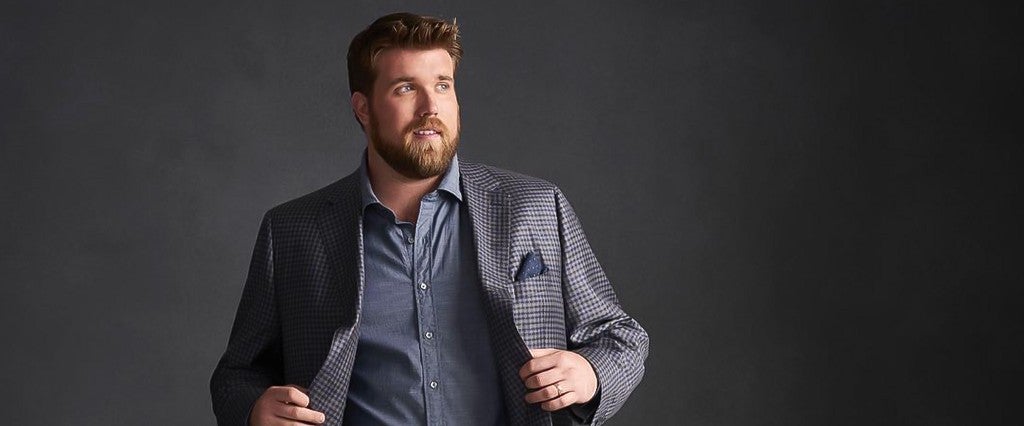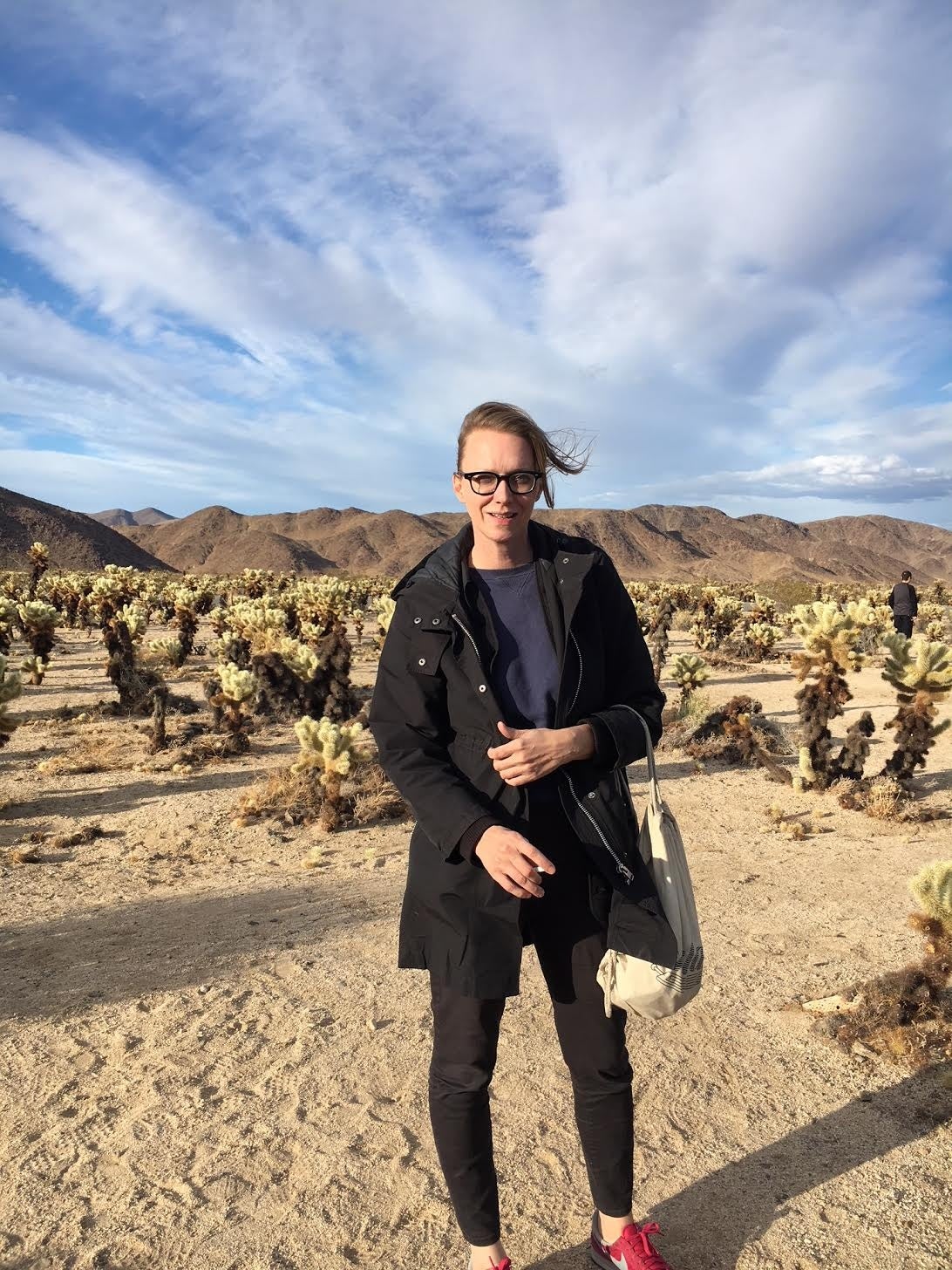In March, one week after IMG announced it had signed Zach Miko, its first plus-sized male model, American Eagle Outfitters debuted a new commercial to promote Aerie, its line of intimate apparel. The commercial featured three men lounging about at home in snug boxer briefs. In a bold break with industry standards, viewers were informed that the Aerie man wasn’t retouched. Perhaps more radical, though, was that the range of body types on display included bigger guys, doing everyday domestic stuff like taking out the garbage—all the while talking about being comfortable in their own skin. At the end, a message flashed across the screen: “The real you is sexy.”
The internet rejoiced. Mic celebrated the commercial as the “underwear campaign we’ve all been waiting for,” heralding it as a new day in inclusivity. The body positivity movement, an overwhelmingly female-focused, feminist-led campaign that has for decades encouraged women to love themselves at any size, was now extending an olive branch to men, and it came with its own hashtag: #aerieMAN.
The only problem? The ad was a joke.
On April 1, American Eagle announced that the campaign was a tongue-in-cheek parody for April Fools’ that was supposed to “challenge norms” and “make you think twice.” Twice about what wasn’t clarified, but the message was clear: The very idea of men sitting around talking about how they felt about the way they looked and learning to like how they looked, as if in some kind of Dove commercial, was a riot, full-stop. Still, American Eagle went on to insist that it’s an inclusive brand that takes body positivity “very seriously,” and whose male customers “respond to humor.”
Not all their male customers, however, thought it was funny. The same went for the models in the ad, who weren’t told up front that their participation would be played for laughs. Kelvin Davis, the black plus-sized model who appears in sea-foam green boxer briefs in the video, made it clear to the media that he thought it was a real ad promoting body confidence.
“I thought it was awesome and beautiful, and then they were like, ‘Uh, just kidding,’” Davis, 29, tells me by phone from South Carolina, where he’s a father of two and an art teacher. “It’s things like this that hurt the body-positivity community for men. We get a little hope, and it’s ripped away.”
If there is such a thing as a household name in the small but growing male-body positivity community, Davis would be among them. His style blog, Notoriously Dapper, brings in nearly 100,000 monthly visitors. His Instagram has more than 50,000 followers, and he routinely lands on buzzy lists of style tips and men to watch in the plus-sized male model community who might change the fashion industry.
The key word here is might. As compared to the women’s body positivity movement, men are lagging. As Details noted last year, plus-sized male models still haven’t walked runways worldwide, as women have, nor have they shown up in any major editorials. Women can boast Ashley Graham, the plus-sized female model who graced Sports Illustrated’s Swimsuit Issue this year. For men, though, all eyes are currently on Miko, whose signing to IMG is considered a watershed moment. “Zach getting signed is great,” Davis says. “But he hasn’t landed a major campaign yet.”
What the movement might also be missing is its own Lindy West, the feminist author and activist whose unapologetic fat acceptance viral screeds — “My Wedding Was Perfect, and I Was Fat as Hell the Whole Time” is one such example — have become the de facto manifestos of the movement, and hers the most recognizable face associated with it. That attention nudges perception ahead in the public eye in ways runways can’t.
It’s not like bigger men don’t face many of the same issues as bigger women: They too can’t find clothes that fit, they too see few examples of models who look like them and they too are less likely to be portrayed in pop culture as desirable. But one thing women have that men don’t is the freedom (such as it is) to openly care about how they look, and to talk about it just as freely. There’s no easy dialog for men to assert with white-hot anger how impossible it is to navigate weight in a culture that treats them with revulsion. Case in point: When I contacted the National Association to Advance Fat Acceptance to find a male activist involved who could help me suss out the gender differences in the movement, they admitted they couldn’t find one willing to speak to the media.
Just after Miko signed to IMG, he told the The Guardian that the reason plus-sized male models have been so slow to catch on in the public eye is simple: “With men, there is still a lot of bravado and false masculinity to get through. You’re not supposed to care about how you look. If you have issues, you aren’t supposed to talk about it. It’s considered weak or un-masculine. Which is stupid.”
He discussed his own experiences of being bullied for being bigger when he was growing up and thinking he was ugly. Overwhelmingly, though, he never got messages that it was okay to care about how he looked. “You project those feelings onto others and that can damage relationships,” he explained to The Guardian. “It creates this vicious cycle. It could all be avoided if you opened up and said I do or don’t feel good about myself.”
Of course popular perception has long said that it’s okay for men to be fat. Bigger guys may not be held up as the ideal physique any more than bigger women are, but at least their size doesn’t exclude them from success. They can still be famous politicians and comedians, and, as numerous TV sitcoms attest, they can still land very hot, skinny wives in spite of their girth. Women, meanwhile, are still treated as though nothing they can achieve in life matters as much as being conventionally attractive.
But fat men say they grow up the object of scorn, derision and ridicule, too. They just have to punch through other deeply held notions about gender to draw attention to it — e.g., that men don’t care how they look or long to be lusted after. Or want to talk about it. And they’re carving all this out in a social-justice movement that wasn’t designed for them, and in an industry that’s been just as hostile to them as it has been to bigger women: Fashion.
“Society’s standard is that guys aren’t supposed to talk about body issues,” Davis says. “It’s not like I can go on Facebook and say, ‘I tried this on, and it didn’t fit me, and I feel so horrible,’ like women do.” Davis started Notoriously Dapper after one such incident at Express. He spotted a red blazer he liked and tried on the biggest size he could find — a 42R. When he asked the clerk for a bigger size, she told him it didn’t exist, advising him to try shopping somewhere else (i.e., a big-and-tall store).
Being frequently redirected to big-and-tall stores, which Davis says simply don’t carry the styles he would like to wear, also frustrated Bruce Sturgell, a self-described “short and wide” man who launched the men’s fashion site Chubstr a few years ago in response to his own difficulties finding clothes that fit.
“Men are conditioned to suck it up and not be open about those things,” Sturgell says. “If you’re a fat guy, you’re told that you’re less than everyone else. That you’re not as worthwhile, that you should be counted out.”
The New York Times took notice of Chubstr in 2011. While the Times’ blogger found the name “impolite,” he lauded the site’s fount of advice and happy community of plus-sized men (and often, their wives and girlfriends) looking for stylish duds for bigger guys. To that end, Chubstr and Notoriously Dapper both document bigger men’s efforts and frustrations (tailoring everything, for instance) in looking sharp but modern — bowties, tailored jackets, selvedge denim and spiffy shoes.
Sturgell says that in spite of the perception that men don’t care about how they look, fashion is actually an easier entry point to get into this community. “It’s more immediate and easier for people to talk about,” he explains. “It’s harder to talk about being bullied, problems in the workplace or fear of having to fit into an airplane seat as opposed to being able to say, ‘All I can find are Hawaiian shirts and tracksuits in my size, and that’s not my style.’”
“I do wish it was more like the women’s community,” Davis says of the men’s movement. “I’m helping people feel good about themselves, but I’m only one person. I can do a little bit of good, but we need 10 of me, 30 of me, 100 of me. The women’s movement took off because they wouldn’t be denied. They were sick of being body shamed. They were like, ‘I’m good enough. I’ve had three kids. I work full-time. My body is awesome, and I look awesome.’ And they believed it. It’s not really the same for men.”
There are, though, some small signs of incremental progress. For instance, Davis and Sturgell say trolling has decreased on both their sites. And Sturgell is looking to partner with brands in the hopes of creating his own line in the future, while Davis says he’s working on a few projects next year that he hopes will bring much greater visibility to the men’s body-positivity movement.
“There’s a thing called male beauty, it’s in the media, and guys want to achieve it, too,” Davis says. “They feel down when they aren’t slim and 6’2”, but guys have to be confident in who they are, too. Confident that it’s okay to dress fly if you don’t look like that, that it’s okay to get things tailored and that it’s okay if things don’t fit you off the rack. After all, clothes aren’t made to fit everybody.”

